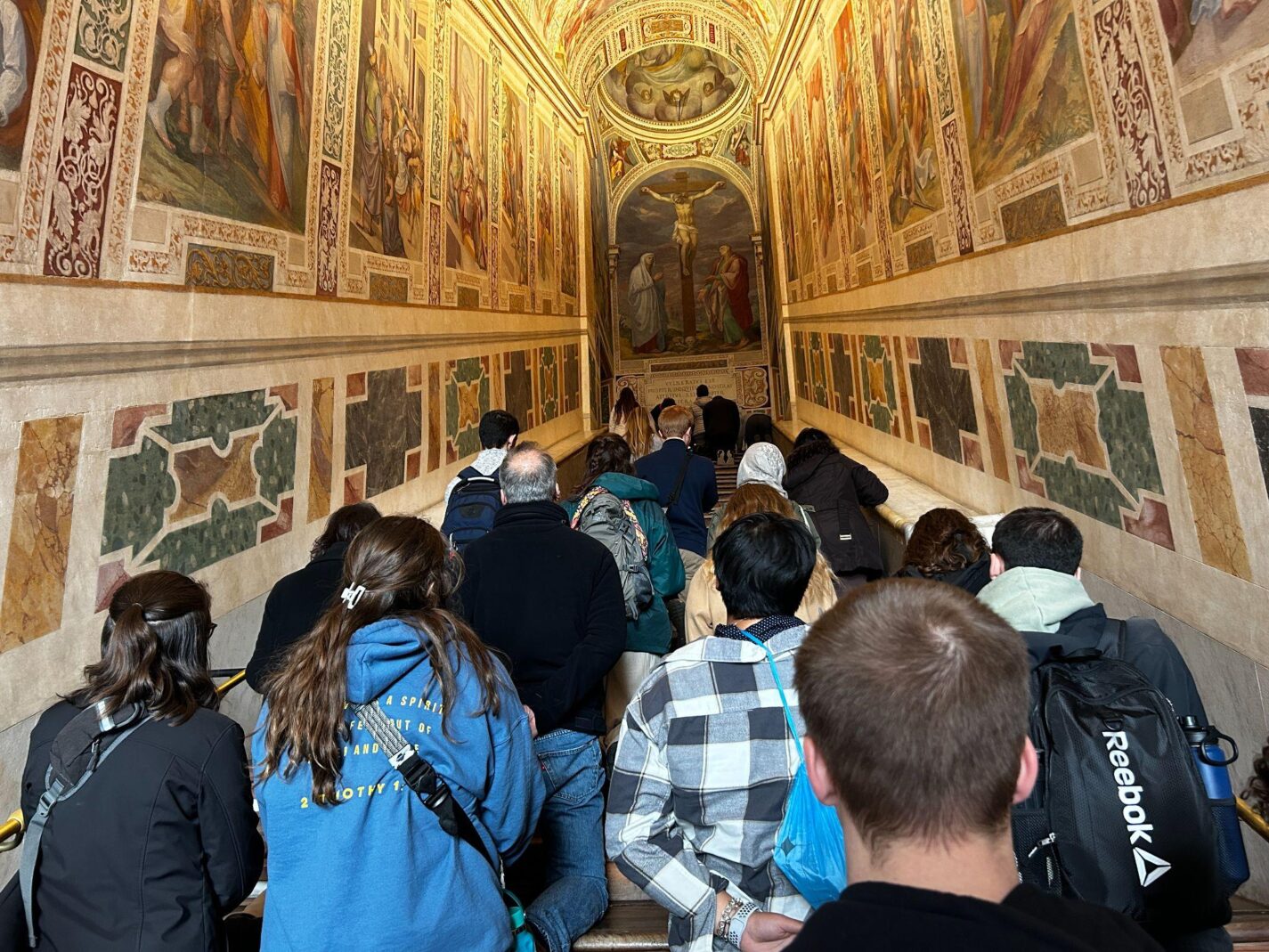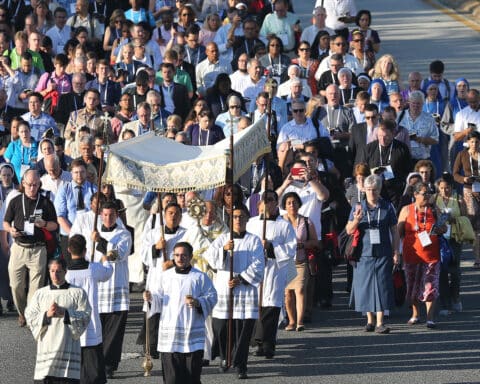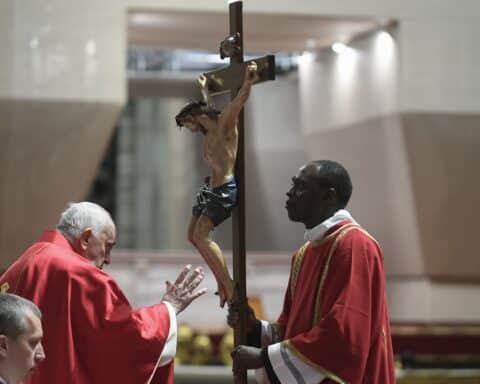As Jesus prepared to enter his Passion, he climbed 28 stairs to meet Pontius Pilate. 2,000 years later, pilgrims from across the world travel to Rome to venerate and prayerfully ascend the stairs, meditating on the Passion and death of the Lord.
At the request of St. Helena, the mother of Emperor Constantine, the stairs, named the Scala Sancta, were brought from Jerusalem to Rome in 326 so they could be better preserved.
Currently, the stairs are housed in the Pontifical Sanctuary of the Holy Stairs after Pope Sixtus V ordered them to be moved from their previous spot in the Lateran Places.
During a recent pilgrimage to Rome, Gabe Mayday, a sophomore at Benedictine College, visited the Pontifical Sanctuary of the Holy Stairs to process up the Scala Santa. What resulted was a profound experience of prayer and meditation.
It should have been us
“The most profound part of the whole experience was the fact that you were walking on the exact same steps that Jesus himself walked up,” Mayday said. “It was profound realizing that Jesus, being God, who is the eternal judge, is now being judged and found guilty by a human judge, and that on every one of these steps he was walking toward his condemnation.”
Out of reverence for Christ and his Passion, pilgrims climb the 28 steps on their knees, recognizing that they are unworthy to walk on the same steps that Jesus once walked on.
“We should have been walking those steps. It should be us dying, but instead Jesus did it for us,” Mayday said. “He walked up those stairs for us, and we should be on our knees in thanksgiving, and for absolute remorse, by the fact that we are unworthy to stand where he stood.”
Climbing the exact stairs that Christ walked up to meet Pilate made the Passion come alive for Mayday. As he ascended the stairs, he prayed about what Christ must have felt and the circumstances surrounding his Passion.
“I initially started off praying with Jesus as he walked up the steps. And then about the last 10 stairs or so, I broke my prayer into reflecting on different parts of the Passion,” Mayday said. “The meditations I remember most were on where Jesus would have been, and everything that went into his Passion.”
Making the Passion tangible
The timing of this experience made it even more powerful for Mayday. He made the pilgrimage in the middle of Lent and shared that he hopes to continue to return to his prayer on the steps as Good Friday approaches.
“Climbing those stairs made the true meaning behind this [Holy Week] that we are preparing to enter so tangible,” Mayday said. “As Good Friday approaches, I hope that my experience climbing the steps will become a point of reflection that I can keep going back to.”
For Mayday, what he will remember most vividly was how it made Christ’s Passion more tangible and approachable, and it gave him the opportunity to enter into Christ’s suffering in a small way.
“You are on your knees; it is uncomfortable. In a teeny tiny way, you’re pulling yourself up into the Passion of Jesus; you’re sitting with him; you’re staying with him in those moments so that you’re able to then be incorporated more deeply into the mystery,” Mayday said. “Climbing the Scala Sancta puts Christ’s Passion into perspective. Instead of thinking that it occurred in some far-off land, no, here you are climbing the actual steps, for Jesus went up to meet Pilate before he was condemned to death.”





